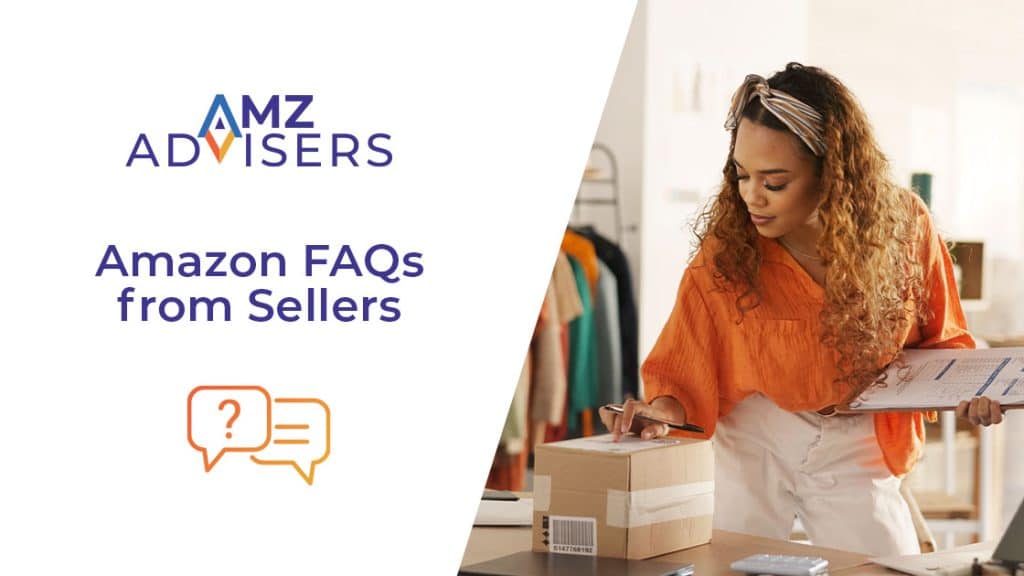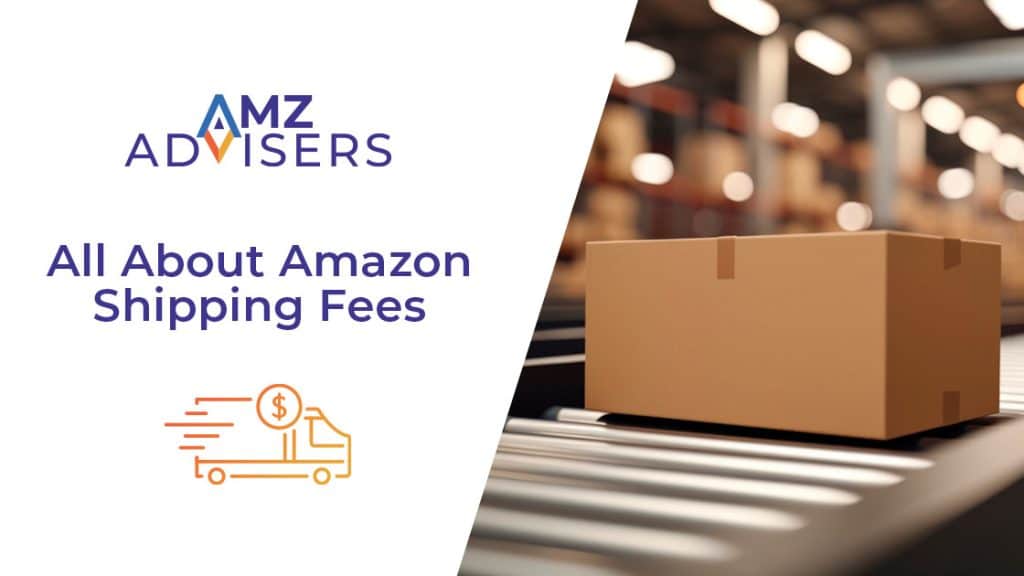Have you received an invitation to join Amazon Vendor Central and aren’t sure what to do?
With over 9.7 million global sellers, Amazon has taken over the eCommerce world. With so many third-party brands, Amazon is always offering the latest opportunities for its vendors.
When you start selling on Amazon, you may be confused by the different selling methods. You can be considered a third-party seller or a first-party vendor. All sellers use Amazon Seller Central to sell their products, and vendors use Vendor Central.
To become an Amazon vendor, you must first receive an invite to join the platform. If you’ve received an invite, you may be wondering how you can use this platform to drive visibility and sales.
Here’s your Amazon Vendor Central guide and the pros and cons of this program.
What Is Amazon Vendor Central?
Amazon Vendor Central is the selling platform for vendors. But what is an Amazon vendor, and how do they differ from sellers? You can think of vendors as wholesalers or suppliers. In other words, you’re not selling your products to the public but to Amazon.
Here are the steps that Amazon takes to purchase your products.
- Amazon sends you a purchase order of what they want to purchase.
- You send Amazon their order.
- Amazon pays you.
After Amazon buys your products, they will sell them to their end customers using their branding.
Instead of Seller Central, vendors use Amazon Vendor Central to track orders, inventory, and advertising/marketing campaigns.
As an Amazon Vendor, the middleman (Amazon) becomes your customer. There are fewer hassles, and it’s simpler to get started. However, there are some challenges, as we will discuss later.
How It Differs From Seller Central
The biggest difference between Seller Central vs Vendor Central is the audience you’re targeting.
Sellers make their products available to the general public, and all selling tools are catered to the vast consumer pool that Amazon attracts. Some of the tools that Amazon sellers use can monitor order fulfillment, sales and customer service.
Vendor Central is a supplier platform, so all selling tools are geared toward wholesalers selling products to Amazon.
When vendors list products, they target Amazon with all marketing and advertising. They set wholesale prices and conduct competitor research only on other suppliers.
Since Amazon is your only customer, you don’t need to worry about fulfilling additional orders, marketing to a niche, or handling customer service.
Requirements
Vendor Central is an invitation-only platform. Amazon has global vendor recruitment teams that find new products that Amazon can sell under their brand.
Here are the types of brands that Amazon targets:
- Marketplace sellers with a strong presence on Amazon
- Exhibitors at trade shows with new and innovative products
If Amazon is interested in onboarding you as a vendor, they will send you an email inviting you to Vendor Central. In the email, they will explain the program and include their business terms. Next, Amazon will make an offer, which you can agree to, or try and negotiate.
When you agree, Amazon will make a Vendor Central account for you. From here, you can create your product listings.
Features
Like Seller Central, your Amazon Vendor account will have a robust dashboard where you can find everything you need to run your business.
The inventory management system lets vendors create and manage product listings and monitor stock levels. You can also find detailed sales and product reports, which you can use to improve your marketing, pricing, and inventory planning. In addition to reports, vendors can also view performance metrics.
Tools
While Vendor Central doesn’t boast as many tools as Seller Central, there are several tools that vendors can use. These include:
- Vendor automation. If vendors use direct fulfillment, they can use automation to generate packing slips and shipping labels. Automation will also confirm shipping to Amazon.
- Sellics. Vendors can use Sellics to optimize SEO, monitor feedback, monitor Buy Box, and manage their advertising. Sellics also has a Seller Central option.
- Jazva. Multichannel ecommerce platform with built-in support for vendors.
- TPSynergy. Includes an Amazon EDI integration to connect to inventory management systems, shopping carts, and other ERPs.
Fees
Instead of traditional fees, Vendor Central comes with three types of “allowances:”
- Damage allowance. An allowance charged to damaged items instead of returning them. The allowance varies between 2% and 3% but can be higher on items that are difficult to return (such as electronics).
- Market development funds (MDF). An allowance applied to different aspects of Vendor Central, from marketing to inventory management. The amount is usually around 10% but can be between 5% and 15%.
- Freight allowance. Amazon uses its courier service to pick up the stock after vendors ship it. A freight allowance of 2%-3% allows Amazon to pay for its courier service.
Pros and Cons of Amazon Vendor Central
There are many reasons why brands may want to become Amazon vendors. Although the program boasts many benefits, it also has some drawbacks.
Pros
The main benefit of becoming a vendor is that brands can widen their reach. If they target end consumers, they can also sell certain products to Amazon and benefit from being both a supplier and seller.
Brands can also choose to become vendors on Amazon if they would rather devote their business to being a wholesaler. This way, they can skip the hardships of selling to end consumers, such as handling marketing and customer service.
While Vendor Central isn’t as robust as Seller Central, vendors can still access powerful features and tools to help them run their business.
Even though vendors handle many tasks, such as fulfillment, they can still use Amazon’s services to expedite the sales and shipping processes.
Cons
There are a few challenges when making it as an Amazon Vendor. These include:
- Limited control over your listings. Amazon has more control over listings on Vendor Central, which can limit your branding and individuality.
- Pricing challenges. Amazon may set a price for your products based on data and algorithms that do not match your pricing strategy.
- High competition. While Seller Central also has a ton of competing sellers, Vendor Central attracts numerous vendors. In addition to the limitations that Amazon imposes, it can be difficult to defeat the competition and achieve a healthy revenue stream.
Tips to Succeed on Amazon Vendor Central
Before becoming an Amazon vendor, it’s important to have a clear strategy. Here are some tactics to add to your campaign:
- Price well. Even though Amazon limits your pricing flexibility, it’s still essential to price well and research pricing strategies.
- Optimize your listings. Use high-quality images and descriptions and optimize for SEO with relevant search terms.
- Leverage tools. While Vendor Central doesn’t offer the robust tool suite as Seller Central, it’s still important to use the software available to you.
- Manage your inventory. When you manage your inventory well, you meet Amazon’s demands while avoiding stockouts. You will always have enough products in stock while meeting future sales spikes.
- Monitor metrics. There are numerous metrics you should track, including feedback, sales, and return rates. Monitor these metrics and update your vendor strategy to align with your goals and performance.
Marketing on Amazon Vendor Central
One of the ways that vendors can rise above the competition is by marketing and advertising and Amazon Vendor Central. But what marketing tools and tactics are available to vendors?
SEO
Amazon has a powerful ecommerce search engine. By optimizing listings for keywords, vendors can improve their search engine rankings and rise to the top of vendor searches.
To start an SEO strategy, vendors should conduct keyword research based on their brand and products. Although the Amazon Vendor portal does not have a keyword tool, there are numerous free and paid search term tools available.
Once vendors have keywords, they should use them throughout a product’s listing. This includes the title, bullet points, features, and backend fields (such as image alt text and meta fields).
At the same time, you don’t want to fill your listings with keywords. This tactic is “keyword stuffing,” and Amazon penalizes brands that do this. Write titles and descriptions for humans and insert keywords naturally.
Product Descriptions
Writing compelling product copy is essential for all brands, and eCommerce vendors are no exception. Highlight the benefits of your product’s features, making the descriptions skimmable with bullet points.
The main difference between a seller writing a product description and a vendor is the target audience. Sellers must focus on the customers’ pain points and offer a solution while informing them of the additional features the product offers. Vendors only target Amazon, so building trust with the eCommerce giant is the ultimate goal.
Promotions
Promotions are a tried and true way to attract customers and increase sales on Amazon. Which promotions can vendors offer? Vendors can offer product bundles, discounts, and limited-time deals.
Advertising
Vendors can use different advertising methods to conquer the competition. These advertising tactics include Sponsored Brands, Sponsored Display, and Sponsored Products. Your brand and products will appear higher on SERPs, driving sales and enhancing visibility.
Amazon Vendor Central FAQs
Is Amazon Vendor Central free?
Amazon Vendor Central can charge different fees depending on what you sell, the promotion and advertising services you use, your fulfillment method, and any product damages.
How do I increase sales on Amazon Vendor Central?
To increase sales as an Amazon vendor, you’ll need to create high-quality product listings and utilize different marketing, promotions, and advertising services.
You’ll want to review your performance metrics to improve your marketing, advertising, and pricing strategies.
Excellent inventory management will keep your stock levels full, and fewer stockouts will satisfy Amazon.
What are Amazon’s payment terms for Vendor Central?
Amazon’s payment requirements are detailed in its business terms, and they may vary between stores. Usually, Amazon has a net payment of 60 to 90 days. There are also earlier payment programs, such as Amazon’s Dynamic Discounting, though you may receive fewer earnings.
Can you be an Amazon seller and vendor?
Absolutely. Many brands have a hybrid Amazon business model. It’s still necessary to have strategies for both selling methods and to adhere to all of Amazon’s business terms.
Can I have separate accounts for Amazon Seller Central and Vendor Central?
Amazon usually allows businesses to open one account. If you open multiple accounts, you must provide a good reason, such as owning separate stores. Even if you have a legitimate reason, each store must receive approval from Amazon.
Know the Ins and Outs of Amazon Vendor Central
If you’re a successful Amazon seller, you may have the opportunity to join Vendor Central. As a vendor, you act as a wholesaler, selling inventory to Amazon that they can brand and re-sell to their end consumers.
However, Amazon Vendor Central may not be the best tactic for every seller. If you’re interested in growing your Amazon store and aren’t experiencing the results you need, it may be time to seek extra help.
When you work with AMZ Advisers, you work with some of the best amazon consultants available, who will work with your goals and produce measurable results.
Click here to schedule a call.
Author






